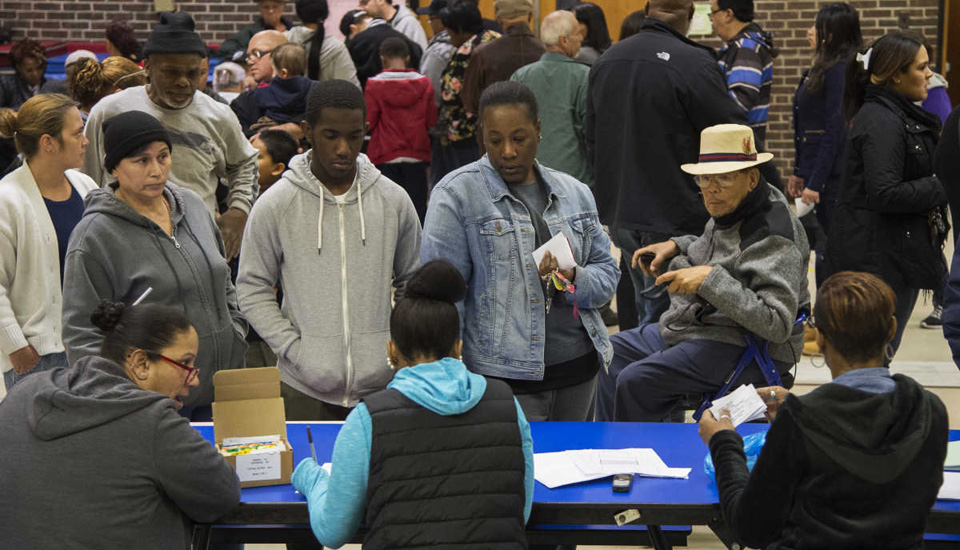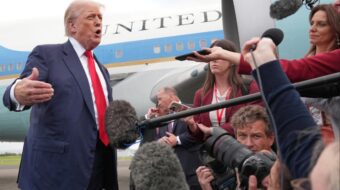
I spent a fair amount of the weeks leading up to the election out canvassing in and around Philadelphia, so permit me to offer my take on what happened.
I noted a couple days before the election that support for Clinton in Pennsylvania was soft. Apparently, that was the truth.
I also noted the deep-felt support for Bernie Sanders – everyone from a white, 55-year-old male cop, a lifelong Republican in the Mayfair section of Philadelphia, to a thirty-something Black female nurse’s aid in the East Oak Lane section.
The key to flipping the many voters who between Trump and Sanders would have voted Sanders, but who between Trump and Clinton voted Trump, was the Democratic Party PROGRAM. In my own experience, where I was able to have that conversation, people frequently changed their position.
Voters in this country are used to seeing elections as a clash between two INDIVIDUALS. As we have seen in the debates that have happened on social media, that view extends to the left as well. The reason folks were flippable is not that they are gullible but because they have the ability to REASON. When we were able to give reasonable people a different, programmatic, perspective on what was going on, we moved them. Where we did not do this work, folks relied on the habitual, shallow approach: Sanders and Trump (individuals) stand for change, Clinton (an individual) does not.
The Democratic primaries weighed heavily in this election. Folks saw the degree to which the Democratic Party “establishment” went to keep Sanders from clinching the nomination. Folks understood Clinton as the representative of that establishment – a fair assumption, when all is said and done. In fact, in the latter stages of the campaign she increasingly came to represent a unified candidate of both the Democratic and GOP establishments. Only a campaign based on the Democratic Party program and on a historical, materialist, dialectical view of the Democratic Party could have changed that. Time and again, I stressed with voters that the real issue in the election was whether we would or would not enact the Sanders program.
Many on the left sat that one out because, goshdarnit, the Democratic Party just can’t contain the embryo of revolution. Others insisted that we needed to back Clinton because the vote was, essentially, about misogyny (dialectics? where? where?). Many fell in line with a most antiMarxist, individualistic approach to the vote.
On racism and misogyny. It is obvious that sections of our electorate are deeply affected by these poisons. White men suffer from both. Many women are racist, many nonwhite men are misogynist. This general election could have been a great unifier: taking people where they are and moving them by appealing to the program, creating a convergence of social forces which, despite their individual weaknesses, could have acted together to create a new political moment.
Instead, we now get to have the national debate on the merits of universal right-to-work (for less).
On a similar note, it is my contention that while racism was a determining factor in Trump’s win, not all Trump supporters are the same. Some are ideological racists – white supremacists of varying stripes. Here I would group other types of ideological extremists: xenophobes, homophobes, gynophobes. But I do not believe these to be the majority. The majority are white men and women for whom the big difference between Trump and Sanders was that Trump had a problem keeping his tongue in check. For many, Trump was Sanders’ “lesser cousin.”
Among this sector of Trump’s base, there was no acknowledgement that a fundamental difference existed between Sanders and Trump, in their stance on racism. Ultimately, this was because these voters simply do not see racism as a significant factor in our society.
Labor is the strategic loser in this election. Not just because we now live in a country where right-to-work may well become a national norm but because labor bet on the wrong horse with the wrong analysis. Labor’s most advanced forces were in the lead on pushing Obama in 2008, in open contestation of the Clintonite program. The Clintonites got their revenge in 2009, in the internecine fighting around Obamacare.
This time around, the AFLCIO national leadership rode the fence. They said they wanted to leave the decision up to the members (who were split). What they did was abdicate their responsibility to lead. Given the choice between doing nothing and backing a platform which was clearly better for working people but which involved renewing the push against the Clintonite neoliberals, labor did nothing. Labor banked on the probability that Clinton had it sewn up and that they could get the Bernie agenda without openly declaring themselves.
Ultimately, labor is strategic because in order for there to be a new direction in the Democratic Party, labor has to back it. Following this defeat, it seems labor has no viable alternative other than to back an alliance with the Sanders forces to push a more openly working class agenda and leadership on the Democratic Party.
It was OUR failure – as a LEFT – to push such an approach that has led to this disaster. Many of us underestimated Bernie’s appeal – some actually attacked him as “dangerous” because he “distracted from antifascist unity” and risked driving an electorate “unprepared for talk of socialism” into the arms of reaction.
It was with genuine shock that some of us discovered that the people of this country are ready for anything that delivers on jobs, standards of living, and a decent future. But having absorbed that incredible truth, we did not take the next logical step: making sure the programmatic and class dynamics driving this process came to the fore. I have stated that this election was a “stealth” moment in history. It was so largely because we on the left who could have and should have pushed a deeper analysis, did not do so.
My feeling is that it is time for a deep going renewal of the U.S. left. We cannot fight the coming battle with half an arsenal and untrained troops.
– Myke Simonian










